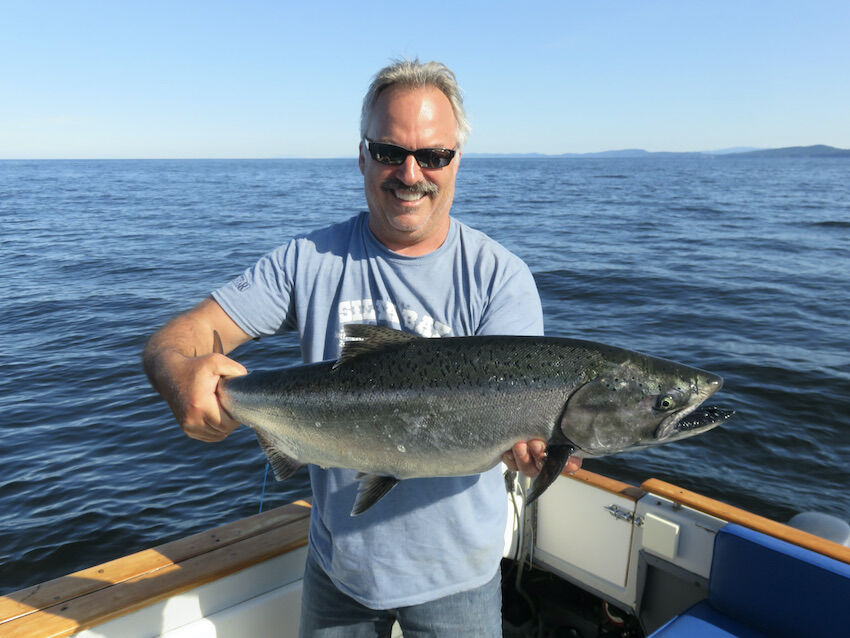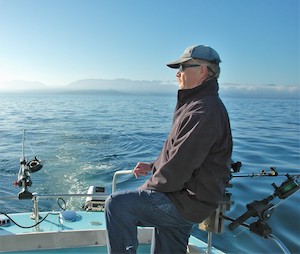
There is a lot of unnecessary confusion and anger right now because of the most recent fisheries notice kicking the announcement of fishing plans down the road to some undetermined date, while reinstating the Chinook non-retention regimen that was in place beginning April 1 in 2019, and 2020. This opinion piece isn’t intended to hammer the Minister of Fisheries and her Department. However there are legitimate reasons why anglers and associated businesses are upset and those reasons need to be expressed here.
The Public Fishery Needs Certainty
This has been a problem going back decades that seems to re-occur because bureaucrats are replaced, and the replacements don’t seem to understand how the public fishery functions. Certainty means that business operators, particularly those in the charter and lodge segment, need to be able to book customers based on a stable business environment. Now there’s confusion. It not only affects those dealing with fishing customers it affects the entire fishing tackle delivery chain, which in some cases has to order parts and materials six months to a year ahead of time.

Guests enjoying a day of guided fishing with Island Pursuit Sport Fishing on the Strait of Georgia – photo by Island Fisherman Magazine
The Fishing Public Is Confused
What can we catch? Where can we go? What’s legal? Regulations, not just for all the salmon species but also for rockfish and whales conservation areas and no-go zones, are getting so complex that anglers need a lawyer onboard to protect themselves from prosecution.

Guest, Matt Dunham, aboard Silver Blue Charters with an early season hatchery Chinook near Gabriola Island, Strait of Georgia
Data Based Decision Making
This might be the most important point of all. The data that led to the Sport Fishing Advisory Board’s (SFAB) proposals, which were determined to be low risk to stocks of concern after assessment by the Fisheries Department (DFO) staff, has been gone over at the microscopic level using the best available information. If they are planning on allowing Chinook retention or hatchery marked fisheries this year, what possible data is out there that hasn’t already been discussed and reviewed? After all the proposals have been out, not just for the past few months, for over a year because they are similar to the work put forward for the 2020-2021 season but even more refined.
So What Is The Decision Making Criteria?
The proposals were put forward based on two overriding principles:
- Allowing Chinook retention in any statistical fishing area, even at the sub-area level of scrutiny, would only occur if there was no evidence or very limited evidence of Upper Fraser River stocks of concern.
- Allowing Chinook retention if there was a high proportion of hatchery adipose clipped Chinook combined with little evidence of stocks of concern.
The data used to support these fisheries has been collected over decades through Coded Wire Tag recovery programs, and more recently by DNA analysis. This data was fitted with the run timing of stocks of concern, which produces the absence or presence information as these stocks pass through the statistical fishing areas along the coast. The proportion of hatchery Chinook was also considered. This informed decision makers about what areas could be opened, based on a high proportion of hatchery marked fish being available for anglers to keep, while releasing any non-adipose clipped wild salmon. The data was then applied to every statistical area affected by the non-retention regulation. It was even assessed at the smaller sub-statistical fishing area level. The examination of this data clearly indicated that there are areas and time periods in Georgia and Juan de Fuca Straits that can support some type of Chinook retention fishing beginning on April 1, 2021.
So, this is an opinion, as much as an explanation of the situation and the process to arrive at proposed fishing plans, as well an appeal to the Minister. There are areas right now that should be open to Chinook retention of at least a hatchery fish. However, the opportunities for some of these areas close quickly over the next few months as the stocks of concern migrate towards the Fraser River. There is a chance to make the right call and to do it quickly. Take it. The very infrastructure of the sport fishery is already strained to the limit and the extremely valuable south coast public fishery, which supports family-owned British Columbia businesses, cannot sustain a third year of non-retention.
If you have not already, let the Minister and Regional Director General know you support these proposals, and that they are important to you.

Tom Davis, Island Fisherman Contributing Editor fishing Sooke Area
Island Fisherman Magazine values and respects the voices of our readers and industry professionals. If you’re interested in writing an IFM Op-Ed, please send an email to [email protected].
4 Comments
Leave A Comment
Visit the Store
$34.99
$34.99
Featured Catch

Joel Unickow halibut (Photo: Rob Frawley Lucky Strike Sportfishing Tofino)








Time for a West coast Fisheries Minister or BC takes over the regulations. It has been said the ‘mandarins change in running our fishery. I think, the same old same old mandarins are still ‘in power’, irregardless the political party in power and they just heed to…the same old same old!!
I agree with your sentitment. Also with the methods you used to derive your conclusions. I wish we could broaden the scope of your concern to include why the government feels these restrictions are necessary and what exactly is the biggest cause requiring these restrictions to be deemed to be necessary. And then have a n honest discussion about that and how to fix it so we can have a sustainable fisheries that meets the needs of all interested parties.
Excellent point. That’s where the rec fish advisors have been trying to get to, but its been like pushing a rope uphill. The Pacific region staff have been pretty good, but the problems lies at the political level in Ottawa. They have put up a number of reasons: Cost, not enough studies, enforcement, compliance, fish related incidental mortalities etc. They are all solvable if there is the will to do it at the Ministerial level.
As much as I understand that fish are import to us as a business, commercial, recreational, and indigenous. What about the fish? Weeding through shakers and releasing wild Chinook or untagged fish comes at a cost to the fish and likelihood of them getting upriver this year to their traditional spawning grounds is low. Let them be… They will have a chance that way.